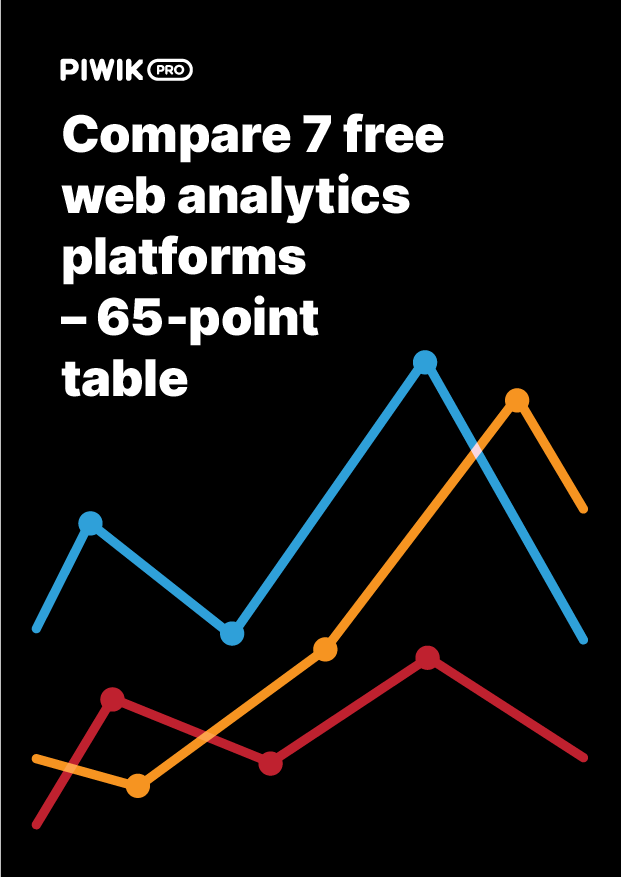The switch from Universal Analytics (GA3 or UA) to Google Analytics 4 (GA4) means dealing with tons of changes, one of them being the different data models they use.
GA3’s data model is based on sessions and page views, while GA4’s is based on events and parameters. This means that the two analytics platforms collect, process, and report the same data differently. GA4 also introduces a new UI, lacks or limits some key capabilities, metrics, and reports known from its predecessor and introduces new ones.
Google sunsetted the previous version of Google Analytics, known as Universal Analytics or GA3. It is now replaced with Google Analytics 4. All standard Universal Analytics properties stopped processing new hits on July 1, 2023, but its historical data were available until July 1, 2024. If you’re using the paid version of Google Analytics (known as Google Analytics 360), these properties stopped processing new hits on July 1, 2024. Website owners and marketers are forced to transition to Google Analytics 4 360. The new Analytics 360 builds on the foundation of Google Analytics 4. This greatly changed platform may cause problems for those used to the UA interface.
Companies and professionals used to UA’s features have been adjusting to this change by going in one of two directions – implementing an analytics platform that uses a completely new tracking logic, or looking for a new platform based on familiar data models.
In this article, we will discuss how GA4 differs from GA3 to help you understand the strengths and weaknesses of Google’s new platform. You will be able to decide whether sticking to GA4 is the right move for you, or perhaps you should look for an alternative that will fill in its gaps. Please note that in this comparison we mostly rely on the default settings of the platforms. We will also present some options if you decide that a user-centric analytics platform like GA4 is not the right choice for you.
Universal Analytics (GA3) vs. Google Analytics 4 (GA4)
One of the first things you’ll notice about Google Analytics 4 is that the platform structure is quite different from Universal Analytics. Where before you had views, you now have data streams. Both platforms allow you to track the same amount of details, yet they measure them differently.
Google Analytics 4 is simplified in some ways. You have a few things automatically set up for you. For example, for the web data stream you set up in a property, you’ll automatically track page views, scrolls, video plays, file downloads, site search, clicks and outbound links. Because Google has pre-selected some of these key settings, it’s easier to get analytics to start tracking. Yet, data collected by default is much more limited and requires customization. It means that the implementation becomes far more difficult if you want to make your dataset more targeted in GA4.
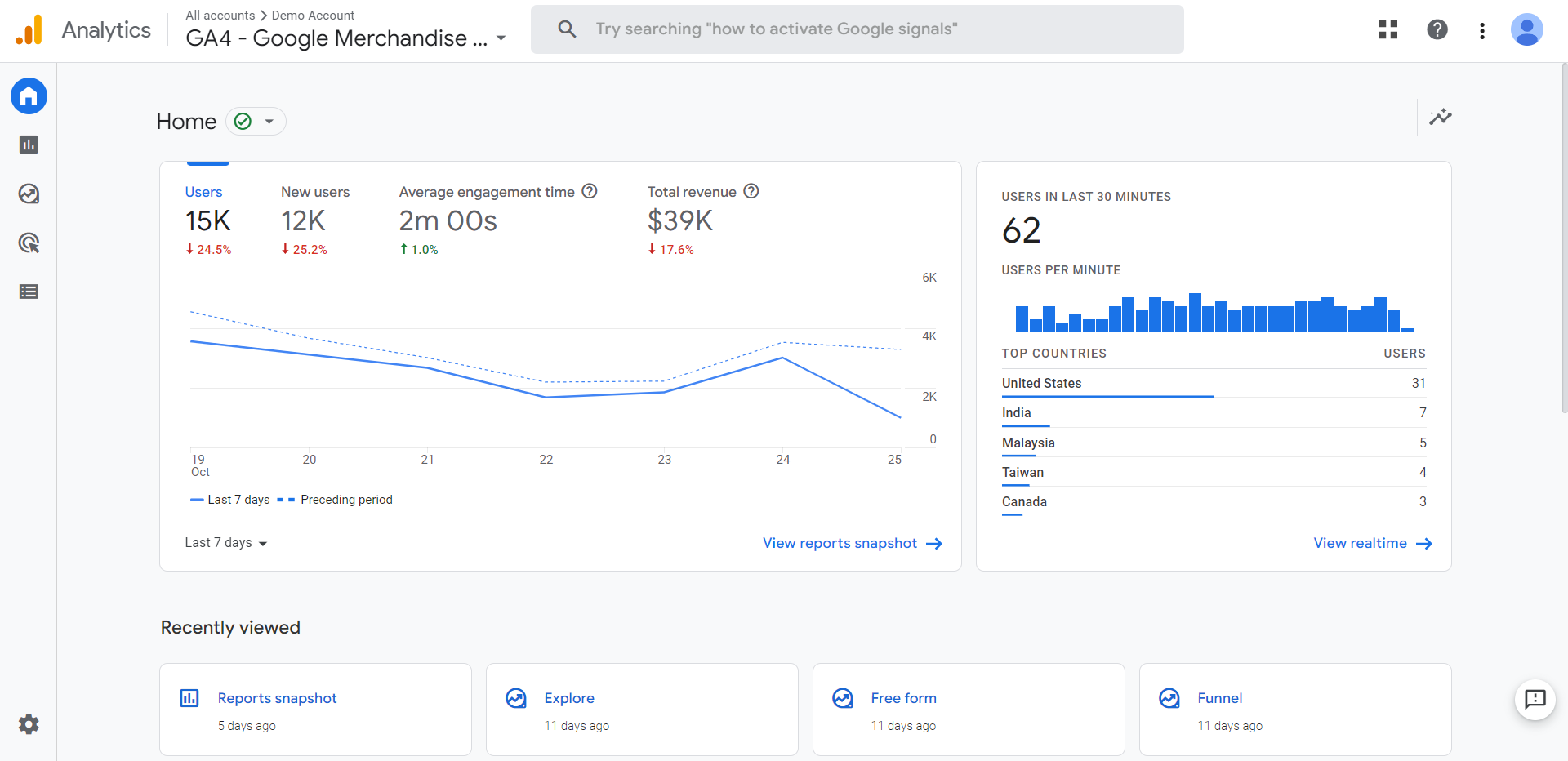
Due to the different measurement model of GA4, some of the metrics are different and many of the familiar reports from Universal Analytics are not available. There are also fewer standard reports in GA4, so you need to construct custom reports for a lot of common use cases.
Universal Analytics was built as a comprehensive suite of pre-made reports that can be used out of the box to analyze online performance.
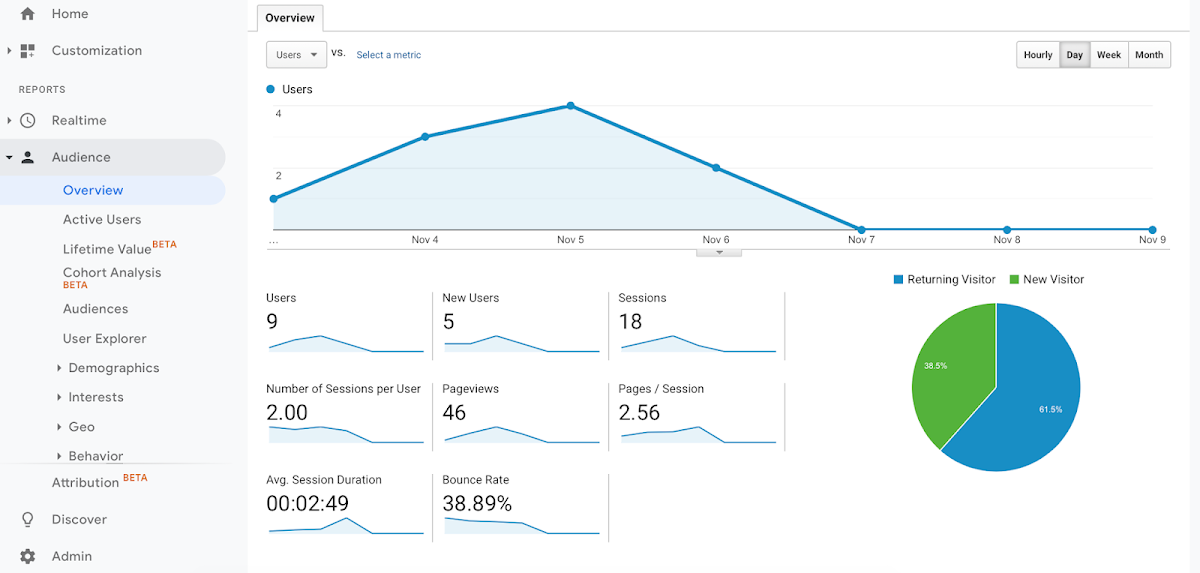
Universal Analytics and Google Analytics 4 measurement models
Since UA is a session-based analytics platform, it uses sessions as the foundation of all reporting. A session refers to various interactions that take place within a given timeframe. You can think of a session as a container for all user actions on your site.
What is crucial in session-based analytics is how the session started (for example, which channel the user came from) and how it ended (for example, where the user dropped off), average session times, and pages per visit, just to give a few examples.
The GA4 event-based data changes how data is measured. GA4 relies on user-based tracking, focusing on user interactions and events across various digital platforms. While things like page views, user timing, and app/screen views are classified as hit types in session-based analytics, here they’re all counted as events.
Let’s explain it a bit further. In UA, events track information about specific user actions within your page, such as button clicks or scrolls. You also need to set them up to make them work. In GA4, the event-based data measurement model provides a more user-centric view of data beyond tracking sessions and page views. All data that comes into your reports is events, including information about users, actions, and information from your website and/or mobile apps.
In UA, events are managed with Google Tag Manager or by including code on the site. With GA4, some events can be edited directly in the Google Analytics user interface.
Conversion attribution
Due to different data models, attribution modeling in UA and GA4 is very different as well.
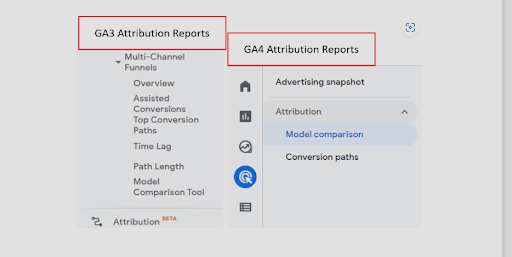
UA has robust attribution modeling features with multi-channel funnels and extensive attribution reports. It is essential in assessing conversion. What’s more, Universal Analytics allows you to segment your attribution reports. Also, it provides you with data-driven attribution reports that work based on algorithms and let you assess converting and non-converting paths.
Attribution modeling in GA4 is data-driven and uses advanced AI to understand each touchpoint’s impact on conversion.
GA4 is deprecating the first-click, linear, time-decay, and position-based attribution models from Google Ads and Google Analytics.
Since May, newly created properties no longer support these models. From September 2023, Google will sunset the models for all other properties. Cross-channel data-driven attribution, cross-channel last click, and Ads preferred last click will remain available.
Data-driven attribution is now the default in GA4 and Google Ads. One thing you should keep in mind is that the data-driven attribution formula is a black box. It’s unclear how it works, so it’s hard to determine the accuracy of its insights.
Acquisition reporting
UA gives you insights into the performance of different customer acquisition channels, such as organic or paid ads. It helps to find out how visitors arrive at your website, which traffic source is working for you, and which pages require optimization.
Traffic acquisition reports are especially helpful to understand how traffic sources perform in terms of total sessions on the site and driving conversions.
Let’s consider the Source/Medium report. This report is the place to go if you want to understand the performance of various traffic sources and mediums. You can also find the referrals under Acquisition, in All Traffic and All Referrals reports and use the information on the ‘start session’ point (where the user found the website) to optimize the results of your referral marketing campaigns.
In Google Analytics 4, there are only 3 acquisition reports initially available. Therefore, GA4 might not provide the same level of useful analytics insight as you can get from Universal Analytics. There is simply not enough information to really grasp the full picture of what’s happening on a site.
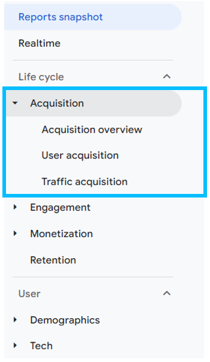
Goal conversions
In Universal Analytics, you can report and analyze the conversion rate of each traffic source for each goal. You may use the ‘end session’ point to analyze and optimize the conversion rate.
For example, the Goal URLs report shows you the URLs where most goals are completed. In many cases, this report will show the URL which you have assigned as the goal completion point (for example, a sign-up form the “thank you” page). And if you’re using events to assign goals, this report becomes even more useful, as it shows which elements of the website help convert the best. With the code implemented on every page of your website you may collect data on clicks on buttons, links, social media profiles and more.
In GA4, goals as conversions are not URL-based. For example, you can’t use the ‘end session’ point as in GA3, so it’s hard to locate actual drop-offs without sessions.
You can only see conversions based on events, requiring you to use Google Tag Manager for most conversion items. To set the events as a conversion, you will have to mark it as a conversion in existing events.
On the one hand, such a conversion tracking setup gives you more flexibility and lets you track even very complex sequences of events. But the need to use GTM even for simple conversions makes the setup difficult. Moreover, in GA4, specific events marked as conversions can’t be isolated as separate metrics in reporting.
Bounce rate and engagement rate
Google suggests GA4 is more customer-centric because it no longer only measures customers’ actions by individual devices or platforms. Instead, it assesses that behavior by measuring how the customer interacts with your business. So, some once-familiar metrics are now gone. Universal Analytics’ bounce rate has been changed.
In GA4, there is an engagement rate and bounce rate. Both metrics are defined in terms of engaged sessions:
- A session is a period during which a user is engaged with your website or app.
- An engaged session is a session that lasts longer than 10 seconds*, has a conversion event, or has at least two pageviews or screenviews.
The engagement rate is the percentage of engaged sessions on your website or mobile app. The bounce rate is the percentage of sessions that were not engaged.
It’s a helpful metric, but it’s less specific than bounce rate. Engagement rate is helpful but less specific than bounce rate. Hence, GA4 gives you less control, as the time for an engaged session is up to 55 seconds, and you have no way to stop conversion events from impacting the bounce rate.
Being able to view landing pages based on lowest and highest bounce rates is a great way for digital marketers to understand which pages perform best and which need optimization. If bounce rate is one of the key metrics for your business, you’ll need to find a new way to identify your best and worst performing pages.
It’s worth noting that, in UA, bounce rate doesn’t have a time threshold. Universal Analytics will record the session as a zero-second session if a site visitor bounces from a web page. Unlike the bounce rate metric, the engagement rate metric has a time threshold associated with it. Because of that, it might be more useful in measuring user engagement on a single-page web/app.
*This parameter is configurable. It makes the analysis more flexible, but also harder, since you have to know the default setting for that.
Cookies and consent requirements
In UA, data gets into the analytics platform from cookie-based tracking. The website sends cookies (or similar identifiers) to a user’s web browser, allowing for monitoring web activity during that user’s session on the site.
If your company manages personal data from EU residents, the EU’s General Data Protection Regulation (GDPR) applies to your organization. GDPR requires website owners to disclose details such as the type, source and purpose of data collection, and with whom this data is shared. According to GDPR, you have to get explicit consent from EU residents to collect and process their personal information. If the user refuses to consent, you can’t collect their personal data.
Using a tool like Universal Analytics to track users, you’ll need to ask for consent via a cookie consent banner. That’s because cookies used by platforms such as GA can contain a great deal of personal data about a visitor’s identity, location, and online activities.
Depending on how many users choose to opt-in, this could cause a decrease in measurable website traffic.
GA4, rather than relying on cookies and JavaScript variables to track every pageview, tracks data based on specific events. But Google Analytics 4 also uses cookies where they are available for tracking.
You still need to display a cookie consent banner on your website to trigger GA4 tags and capture user data. If consent isn’t granted, the data is captured, but without identifiers. The collected data will only consist of events with limited user information, which makes it difficult to analyze the customer journey, run conversion attribution, or analyze funnels. The events won’t be tied to a session.
Google applies behavioral modeling – machine learning is used to model the behavior of users who decline analytics cookies based on the behavior of similar users who accept analytics cookies. It means that the reports you analyze in GA4 display data that is modeled, and not the real behavior of your website’s visitors. Because of that, GA4’s ‘privacy by design’ might not be a solution to capturing 100% of reliable data when users don’t want to be tracked.
Customer journey analytics: funnels, user flows and more
With UA’s session-based model, user flows and funnels are based on events that happened within one visit (session). It can be less accurate when the steps in a conversion funnel were completed during separate visits.
GA4 gives you customer-centric measurement from multiple touchpoints, instead of measurement fragmented by device or by platform. Customer-centric insights might give you a fuller picture of the buyer funnel, especially if your conversion funnel involves many steps that can be completed during separate visits.
Let’s discuss this in detail. Google Analytics 4 users have access to funnel exploration features. In GA4, funnel exploration utilizes data that’s already been collected. In Universal Analytics, using funnels requires defining a goal. The report will only show data collected going forward from that point. Whereas in Universal Analytics step customization is based on Page dimension, in GA4 it is based on events, with filtering by other dimensions.
In Google Analytics 4, you can choose how to count conversions with the new counting method setting for conversion events. “Once per event” is recommended, but if you need it to match Universal Analytics, choose “Once per session.”
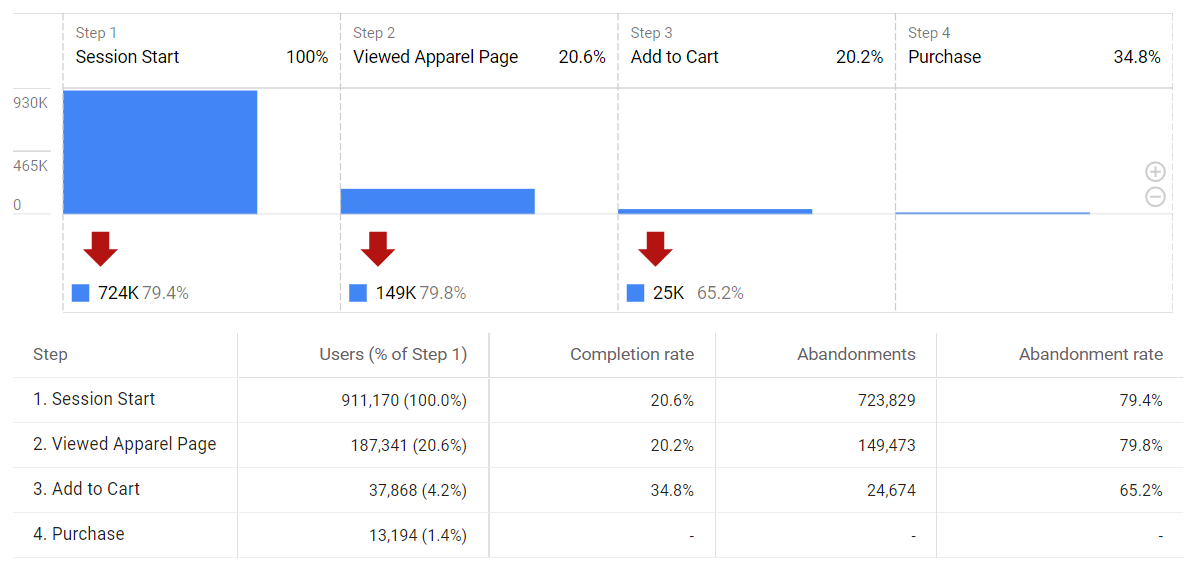
Universal Analytics offers many types of flow reporting. The list includes:
- Behavior flow
- Goal flow
- Users flow
- Events flow
- Funnel visualization
- Google Play referral flow
GA4 doesn’t have a behavior flow report. Instead, you can use your exploration templates to follow your user’s journey. Use your funnel exploration report to track a predetermined path or your path exploration for free-form tracking.
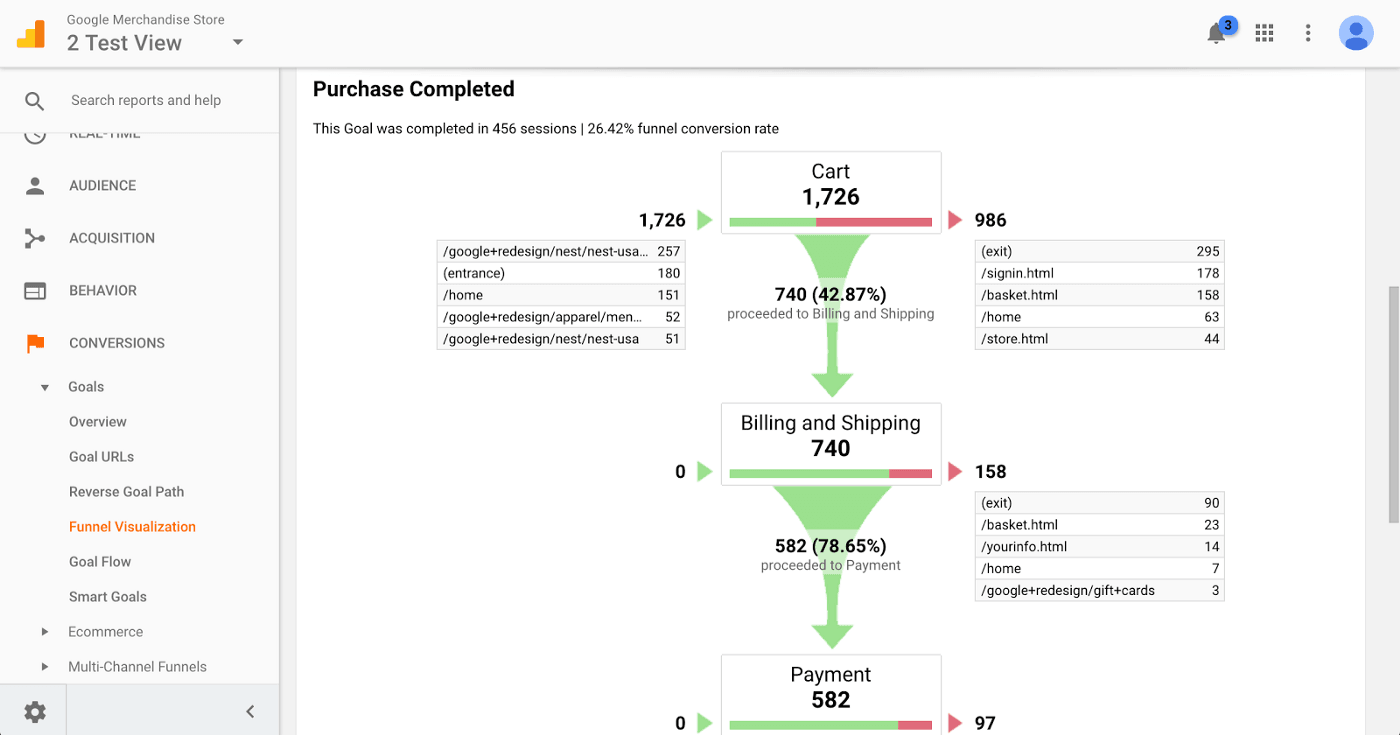
Rich ecommerce tracking capabilities
UA offers a wealth of data related to ecommerce. You can use it to track and analyze transactions, revenue, or products you’ve sold.
Ecommerce data in UA gives you insights into products with a high (or low) number of sales, the average revenue, the number of products per transaction, your online store’s conversion rate or changes, and trends in transactions and revenue over time.
GA4 lacks the enhanced ecommerce module available in UA. Ecommerce reports in GA4 seem to provide much less information than what Universal Analytics offered. For example, the lack of product-level custom dimensions in GA4 can surprise you if you depend heavily on ecommerce. Additionally, GA4 lacks some important metrics for measuring item-level performance that were previously available – Add-to-detail and Buy-to-detail rate.
Due to the different conversion model, you will need to head to Google Tag Manager (GTM) if you want to track more complex conversions like click-to-call or purchases. It requires technical knowledge to go in and set them up. This can be especially tricky for ecommerce site owners who may need to track multiple complex conversions.
So, if your business relies on detailed ecommerce reports, you shouldn’t rely solely on GA4. At least not yet.
Data sampling
With Universal Analytics, data sampling occurs automatically when you reach the monthly limit of 500,000 sessions.
In GA4, data sampling is applied to standard and advanced reports. The quota limit for event level queries is 10 million events. In case of GA4 360 The quota limit is 1 billion events.
Mobile and app analytics
GA4’s event-based data model allows for a unified tracking system for web and app.
Earlier, you had to use Google Analytics for your website tracking and Firebase for your app tracking. Now you can do it in one place.
Required skill set
New GA4 users are sometimes intimidated by the new layout. The familiar Universal Analytics interface is gone, along with its standard reports and metrics.
Google Analytics 4 switches from a ready-made reporting interface. It is moving towards providing do-it-yourself tools for your reporting. Explorations in GA4 is a collection of advanced techniques that go beyond standard reports to help you uncover insights about your customers’ behavior. Thus, it provides more customization but requires greater analytical skills.
Moreover, GA4 seems to be built more as a tool for collecting lots of data, with much of the analysis taking place outside the platform. Since the GA4 default reports are limited, many users are building their GA4 reports in Looker Studio or exporting their data to BigQuery. That’s something that requires a deep understanding of the data.
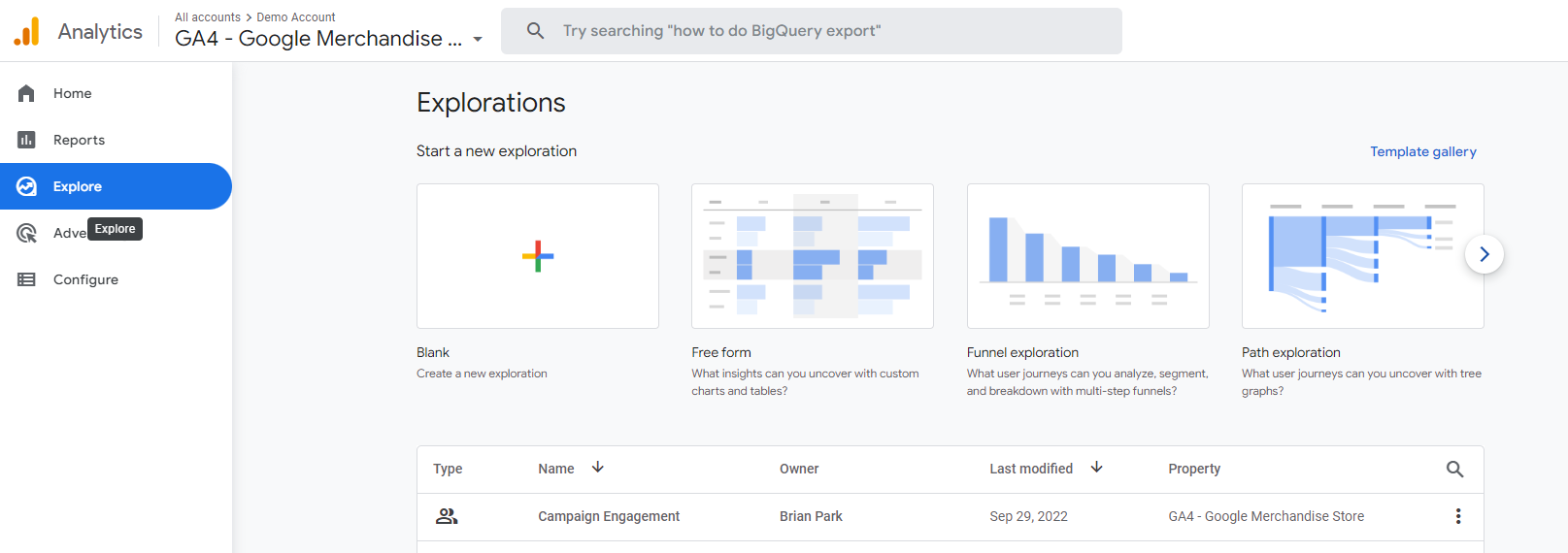
Privacy matters
Last but not least, let’s talk about the standards of user privacy provided by both platforms.
Several EU data protection authorities (DPA) have concluded that using Universal Analytics and GA4 is unlawful under the General Data Protection Regulation (GDPR). So far, we’ve seen opinions from the Austrian, French, Danish, Norwegian, Italian and Swedish DPAs. Companies have been ordered to stop using Google Analytics. Both platforms send EU residents’ personal data to the US, making it available to surveillance by US authorities due to the absence of an adequate EU-US data deal after the invalidation of Privacy Shield in 2020. Moreover, Google still collects user identifiers that are not anonymized in a way that satisfies the requirements of GDPR.
Google has released additional privacy controls for GA4 to help respond to these privacy concerns. Some of them include default IP anonymization and consent mode – to modify the behavior of Google tags based on user’s consent preferences, shorter data storage duration, deletion of users’ personal data and more.
However, though GA4’s privacy features look good on paper, they remain insufficient. Google still doesn’t properly secure EU residents’ data against US surveillance laws. GA4 has no mechanism for guaranteeing intra-EU data storage or selecting a designated regional storage location. Google also does not inform users about data storage locations or data transfers outside of the EU.
GA4 is visitor-oriented, which makes it reliant on collecting data about individuals, and it can fail under the consent requirement. You will be working on a limited data set. As mentioned, even though Google makes an effort to “fill in the gaps” using their predictive data models and hits tracking, this isn’t linked to sessions (including channels, etc.) and isn’t giving you full visibility into your audience.
You might also like: Is Google Analytics (3 & 4) GDPR-compliant?
A quick recap of the platform’s capabilities
Advantages and disadvantages of GA3
Rich attribution modeling features
You get a bird’s eye view of each customer journey — from the starting point to the moment of conversion.
Privacy compliance
According to several EU data protection authorities, the use of Universal Analytics is illegal under GDPR.
Robust standard acquisition reporting
It gives you insights into how visitors arrive at your website, which traffic source is working for you, and pages that require optimization.
Customer journey limitation
User flows and funnels are based on events that happened within one visit. It is less accurate when the steps in a conversion funnel are completed during separate visits.
Rich ecommerce tracking capabilities
UA offers a long list of tracking details. You can use it to track and analyze transaction data, revenue, or products you’ve sold.
Data sampling
Automatic sampling for more than 500K sessions per month.
Quick goal conversions
You can report and analyze the conversion rate of each traffic source for each goal.
Separate tracking for web and mobile apps
If you want to track a mobile app’s data in your Google Analytics account, you need to rely upon a Firebase integration to do it.
Advantages and disadvantages of GA4
One platform for both website and mobile app data
GA4’s event-based data model allows for a unified tracking system for web and app.
Steep learning curve (not an out-of-the box solution)
The data model is completely different, new UI, very few standard features, missing key metrics.
Better user insights
GA4 gives you customer-centric measurement from multiple touchpoints, which gives you a fuller picture of the buyer funnel.
Limited acquisition reporting
Only 3 default acquisition reports that don’t provide the same level of useful analytics insight that we can get from Universal Analytics.
Greater customization options
You can customize your events, so they can be used to report on various actions your users take and any user traits you would like to see in your reports.
All conversions are events/Different conversions
If you’re used to using URL destination goals in UA, you’ll need to set up events in GA4 with the same goal values. This is way more complicated than simply creating a goal in UA.
Data sampling
It occurs only in advanced reporting when the data exceeds 10 million in counts.
Privacy
Despite some privacy changes introduced in GA4, the new version of the product is considered illegal by some European DPAs.
Lack of historical data
When you switch to GA4, you’re starting from scratch. All of your historical data from UA will not be transferred over.
Experts opinion
André Wehr
GA4 is most suitable for companies that don’t need to focus on data privacy, sovereignty and storage and can rely on low-cost alternatives. Companies that should particularly consider alternatives to GA4 include those operating in heavily regulated industries, such as financial services, healthcare, utilities, telecommunications, or government-related digital products. GA4 won’t be the best choice for teams that require special customization or have complex data architecture with many channels and traffic.
GA4 includes new privacy features that can be beneficial. IP anonymization is enabled by default and cannot be disabled. IP addresses are processed and stored as a hash value to anonymize them. Meanwhile, Consent Mode helps obtain consent for collecting other types of personal data, such as IP addresses, browser fingerprints, or geo-data.
However, default IP anonymization and Consent Mode are not sufficient for a digital product to be GDPR compliant. At a minimum, you need to:
- Use a consent management platform (CMP) to obtain, manage and document user consent. Google Consent Mode is not a CMP – it regulates the behavior of Google tags but ignores other pixels and scripts and doesn’t let you document user consent.
- Appoint a data protection officer (DPO) who is familiar with legal and constantly updating data protection requirements and can support their implementation.
- Conduct data protection audits to identify vulnerabilities, evaluate measures, and thus implement them effectively.
GA4 also lacks in aspects beyond privacy.
For one, GA4 lacks many basic reports. Universal Analytics included numerous standardized reports that could be evaluated with secondary dimensions, especially regarding SEA campaigns and data imports from Google Ads. To work around this, you need to run the analyses in Looker Studio or other data visualization programs, such as Shiny.
Customization in GA4 gets complex. Our team struggles with Google’s limited custom dimensions and metrics. Solving this requires more workarounds, which typically means swerving out of GA4 into a supplemental data pipeline for individual measurement and evaluation needs.
An additional challenge in GA4 is the restriction of quotas for GA4 API when connected with Looker Studio. We see frequent issues with reports not being displayed correctly. Alternative solutions include upgrading to GA4 360, which is quite cost-intensive for most companies, or using tools like the BigQuery Connector or Supermetrics.
Summary
Universal Analytics gives you such information as the number of unique visitors and pageviews on your website. It offers a rich set of built-in reports like acquisition reports, thanks to which you can get data and insights on how people are finding your website. And if you set up custom event tracking on your website, you can understand your site’s user behavior better.
GA4 provides you with more customer-centric insights, whereas UA gives you data about your users and deeper insights into how well your website is performing.
So, switching to a fully event-based data model will be a radical change. The data model is a completely different product, with a new UI and very few predefined features.
Is GA4 the right choice for your business?
Now that we have a better idea of what GA4 is and how it differs from GA3, the question is — who is the new platform right for? GA4 may not be for everyone.
GA4 is a good fit:
1. For larger organizations. You need time and resources to rethink, redesign, and rebuild your data pipeline. In all, data capture is much more limited by default. It requires customization and difficult implementation to make data more targeted in GA4. That, in turn, allows organizations to really tailor it to their needs but requires a much greater investment in data strategy and configuration.
2. For a pro analytics user who is not afraid of customizing their analytics setup. In GA4, instead of using simpler, default, and older industry standard definitions, you will need to define and deploy your own event tracking.
3. For those who need detailed funnel modeling. In the UA data model, user flows and funnels are based on events performed within one visit (session). Event-based analytics uses visitor ID to generate flows and funnels, thus it might be more accurate when there are many steps in a conversion funnel that can be completed during separate visits.
4. For businesses that are app-first in their approach. They are already used to the Firebase model and reporting since GA4 has adopted the Firebase Analytics data model.
GA4 is a bad fit:
1. If your organization has small data teams. Teams that are smaller and less experienced with data capture may find it difficult to take advantage of GA4 as it relies on managing and building different data pipelines.
2. If you don’t have the capacity and resources to create custom event tracking or the time to design and deploy custom reports, and you don’t want to use outside assistance.
3. If you rely on behavior reporting, benchmarking, and ecommerce flow reports from GA3. These features are gone in GA4, so you will be starting from scratch and measuring events instead.
4. If you need greater detail on user interactions. If you have a single-page website or quite a few on-page actions (events) you want to measure, these can be tricky to track without the use of Google Tag Manager to push event data to Google Analytics.
Experts opinion
Emanuele Celoria
This is the perfect time for all companies that were relying on Universal Analytics to look forward and challenge the way they were doing analytics and using data in their decision-making process. Both big corporations and startups need to focus on their business strategies and pay attention to the way they process customer data to choose the best alternative technology.
Some emerging solutions are already mature enough to bring significant value to companies. For instance, Mixpanel is doing a great job positioning itself among the best product analytics tools, offering intuitive reporting and simple integration with a huge set of third-party platforms. GA4 is advancing into the future with data activation capabilities, which is particularly interesting for digitally mature companies. However, likely due to unexpected issues with the platform’s shift to an event-based data model, GA4 is currently far from being a solid analytics solution.
Privacy remains a major concern around GA4. I got the impression that GA4’s privacy features had to be implemented only to meet privacy expectations but were not part of the platform’s initial design. This may trouble companies that need strong assurances on privacy matters.
Among the privacy features available, the default IP anonymization is one of the most debated. It’s uncertain whether it is sufficient under the GDPR, considering that Google is an American company with anonymization servers in Europe. GA4 also offers the option to disable device and location information on a country level to limit the risks of device fingerprinting. However, reports without such data may not be relevant for certain use cases.
Consent Mode is commonly presented as a privacy feature but it is just a way of managing users’ cookie preferences. Although its goal is to help analytics teams fill in the blanks left by the lack of consent, is it acceptable to track users’ interactions when they didn’t give consent? Do we trust GA4’s conversion modeling algorithm? Until the relationship between EU-US data transfers is not settled from a legal point of view, companies valuing users’ trust may be at risk. To minimize it, companies should consider shifting to a server-side technology aside from using standard GA4 privacy features. This solution is quick to deploy, easy to run and offers complete ownership over data flows, enabling several possibilities to protect users’ personal data.
Since the moment it was released, GA4 has given the impression of a slightly immature tool, especially for enterprise companies with complex use cases. Google’s platform has complicated many analytics setups.
One of the most problematic aspects has been reporting. GA4 offers many ways to look at the same data in standard reporting, explorations, or when using BigQuery. Though business and marketing teams can benefit from the flexibility to satisfy many use cases, companies must now invest much more in their analytics departments. Each source may also show different numbers for the same metrics and KPIs, which can confuse teams that use the platform.
Currently, GA4 does not support real-time applications, since raw data within BigQuery is often consolidated with big delays. Companies have to address these needs by implementing a parallel solution.
What is the alternative to GA4?
The reality is that you don’t have to migrate to GA4. Plenty of alternative platforms won’t require such a complex setup, numerous custom implementations for basic use cases, and advanced technical skills, or have such a steep learning curve, to name just a few troublesome issues.
Piwik PRO is easy to set up and makes it effortless to configure key data collection settings, such as the use of cookies, without having to leave the interface or write code. The platform comes with a number of built-in reports similar to those found in Universal Analytics. It offers a high level of customization, allowing users to tailor the platform to their specific needs, and provides open APIs to facilitate integration with other tools and systems.
In terms of the data model, Piwik PRO supports both session- and event-based use cases. It uses event-based tracking but collects and processes user interactions on a session level. In its capabilities, Piwik PRO meets the needs of both analysts and marketers, which makes it more universal.
On top of that, Piwik PRO is built with privacy in mind. It has an integrated Consent Manager that makes it easy to stay compliant with laws such as GDPR or TTDSG/TDDDG, and other features, like anonymous data tracking methods to collect data with no need for consent or the ability to comply with HIPAA. You can also benefit from full control over the data you collect. That, combined with flexible hosting and data residency (including EU-based hosting), allows you to employ analytics in more contexts without violating user privacy.
Check out how Piwik PRO compares to Google Analytics: Piwik PRO vs. Universal Analytics & Google Analytics 4.
Piwik PRO’S Migration tool (GA3 and GTM)
Piwik PRO’S Migration tool (GA3 and GTM)
The migration tool lets you quickly transfer your settings from Google Analytics 3 (Universal Analytics) and Google Tag Manager. It enables you to import GA3 properties, settings, goals, custom dimensions, and Google Tag Manager containers, including tags, triggers, and variables.
If you’d like to learn more about a privacy-friendly, session- and event-based analytics platform, be sure to contact us. We’ll be happy to answer all your questions.












